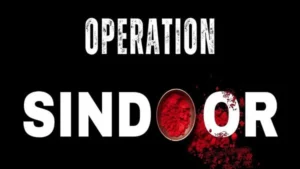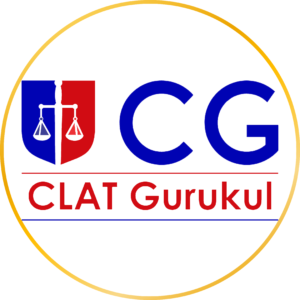
Why in News:
A major breakthrough has been achieved in India–US civil nuclear cooperation, as the United States Department of Energy (DoE) has granted regulatory clearance to a US-based company, Holtec International, to design and build nuclear reactors in India. This move comes nearly two decades after the civil nuclear deal was conceptualized, thus unlocking its commercial potential.
Introduction:
The India-US Civil Nuclear Agreement, signed in 2008, was a landmark accord that aimed to facilitate civil nuclear trade between the two countries. However, despite the diplomatic success, commercial cooperation was stalled due to regulatory, liability, and technical hurdles. The recent authorization by the US DoE to Holtec marks a significant step toward operationalizing the agreement, enabling actual transfer of nuclear reactor technology to India.
Point-wise Summary of the Article:
- Historic Approval After Two Decades:
- The US Department of Energy (DoE) granted Holtec International an unprecedented regulatory clearance under Part 810 of Title 10 of the US Code of Federal Regulations.
- This authorization allows Holtec to transfer nuclear technology to Indian companies for reactor construction.
- Companies Involved:
- Holtec can collaborate with Indian conglomerates like L&T (Larsen & Toubro), Tata, and their subsidiaries.
- This transfer is subject to IAEA (International Atomic Energy Agency) safeguards, ensuring peaceful use of nuclear technology.
- Scope of the Deal:
- Holtec will be allowed to build SMR-160 reactors (Small Modular Reactors) in India.
- It may work with TCE (Tata Consulting Engineers) and L&T to manufacture components for these reactors.
- Government Partners in India:
- Holtec is expected to work with public sector undertakings like NPCIL (Nuclear Power Corporation of India Ltd) and other state-owned reactor operators.
- What is SMR-160?
- SMR-160 is a small modular nuclear reactor designed for enhanced safety, lower cost, and greater flexibility in deployment.
- These reactors are seen as crucial in meeting India’s energy demands while reducing carbon emissions.
- India–US Civil Nuclear Deal – A Recap:
- The deal was signed in 2008 under Prime Minister Manmohan Singh and US President George W. Bush.
- While it opened doors for nuclear trade, commercial cooperation lagged due to liability concerns and regulatory hurdles.
- Trade Deal Negotiations Still On:
- Parallelly, a four-day India–US trade dialogue took place and concluded without finalizing the Terms of Reference (ToR).
- While there was convergence on many trade issues, no clarity was provided on reciprocal tariff relief from the US.
- First Tranche of Trade Deal by Fall:
- India and the US are targeting the first tranche of the bilateral trade agreement by Fall (autumn) this year.
- However, reciprocal tariff relaxation by the US remains uncertain.
- Diplomatic Backdrop:
- A photo in the article shows PM Narendra Modi with former US President Donald Trump, indicating continued diplomatic engagement.
- Statements from Indian Officials:
- India’s Ministry of Commerce stated that talks concluded with a “broad understanding” but not with a formal agreement.
- The deal could have long-term implications for India’s trade and nuclear energy capabilities.
Notes (Explanation of Key Terms):
- Holtec International:
- A US-based energy technology company specializing in nuclear reactor design and spent fuel storage systems.
- Developer of the SMR-160, a safe and modular reactor designed for clean energy production.
- Part 810 Authorization:
- Refers to regulations under Title 10 of the US Code of Federal Regulations, which control the export of nuclear technology and information.
- Part 810 authorization is essential for any US firm to share nuclear technology with foreign entities.
- IAEA Safeguards:
- Protocols enforced by the International Atomic Energy Agency to ensure nuclear technology is used solely for peaceful purposes.
- SMR-160 Reactors:
- Small Modular Reactors designed to be safer and more economical than traditional reactors.
- 160 MWe capacity—ideal for smaller grids or regions with limited infrastructure.
- NPCIL (Nuclear Power Corporation of India Ltd):
- A government-owned company responsible for the design, construction, and operation of India’s nuclear power reactors.
- TCE (Tata Consulting Engineers):
- A premier engineering consulting company in India offering services in power, infrastructure, and other sectors.
- DoE (Department of Energy):
- US government department overseeing energy production and regulation, including nuclear safety and technology exports.
- Terms of Reference (ToR):
- A preliminary document outlining the scope and objectives of a proposed trade agreement.
- Tranche:
- A portion or installment, often used to describe stages in trade agreements or financial disbursements.
- Bilateral Trade Agreement (BTA):
- An agreement between two countries to facilitate trade by reducing tariffs, quotas, and other trade barriers.
Relevance for CLAT Aspirants:
- Legal Angle: Understanding international agreements, regulatory clearances, and nuclear liability frameworks is important for legal studies.
- Current Affairs: This development is crucial for GK and Current Affairs sections.
- Science & Technology: Knowledge of nuclear energy, SMRs, and their regulation is relevant for understanding India’s energy policy.
- International Relations: Reflects growing India–US strategic ties, which are significant for global diplomacy topics.
- Economy & Trade: Bilateral trade negotiations and tariff talks highlight economic diplomacy and WTO regulations.







